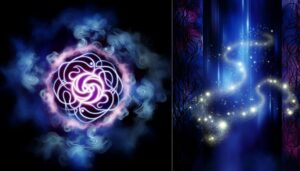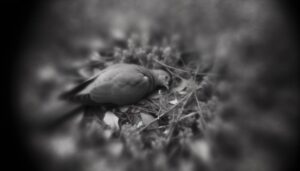What Is the Celtic Soulmate Symbol for Love?
The Celtic symbol for love, deeply rooted in ancient traditions, conveys enduring affection and spiritual unity through intricate knotwork. Originating in the early medieval period, these symbols are characterized by continuous loops that embody perpetuity and interconnectedness.
The Claddagh, Ailm, and Serch Bythol are notable variations, each encapsulating distinct facets of love such as loyalty, strength, and eternal unity. Modern interpretations include the Claddagh Ring for romantic commitment and the Celtic Knot for enduring love.
The richness and layers of meanings add profound depth to these timeless symbols, offering insight into their cultural and historical significance.
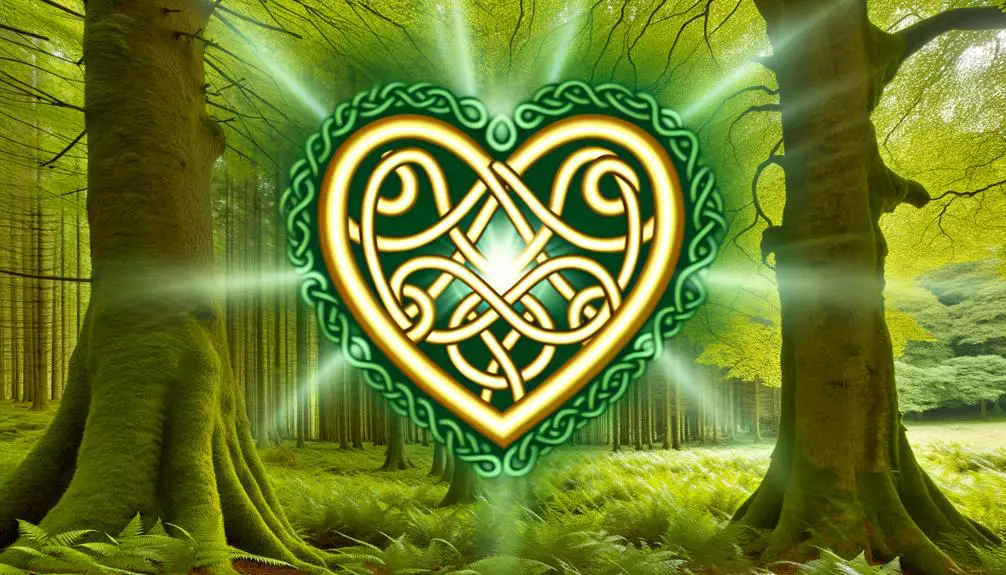
Key Takeaways
- The Serch Bythol symbol represents eternal love and unity, making it ideal for depicting soulmates.
- Celtic Knot patterns embody the concept of endless love and interconnectedness, symbolizing the soulmate connection.
- The Claddagh symbol, with its elements of love, friendship, and loyalty, is often used to signify soulmate relationships.
- Interlocking spirals in Celtic designs symbolize the cyclical and perpetual nature of a soulmate bond.
- Modern interpretations of the Triskelion reflect personal growth within a relationship, resonating with the soulmate connection.
Historical Background
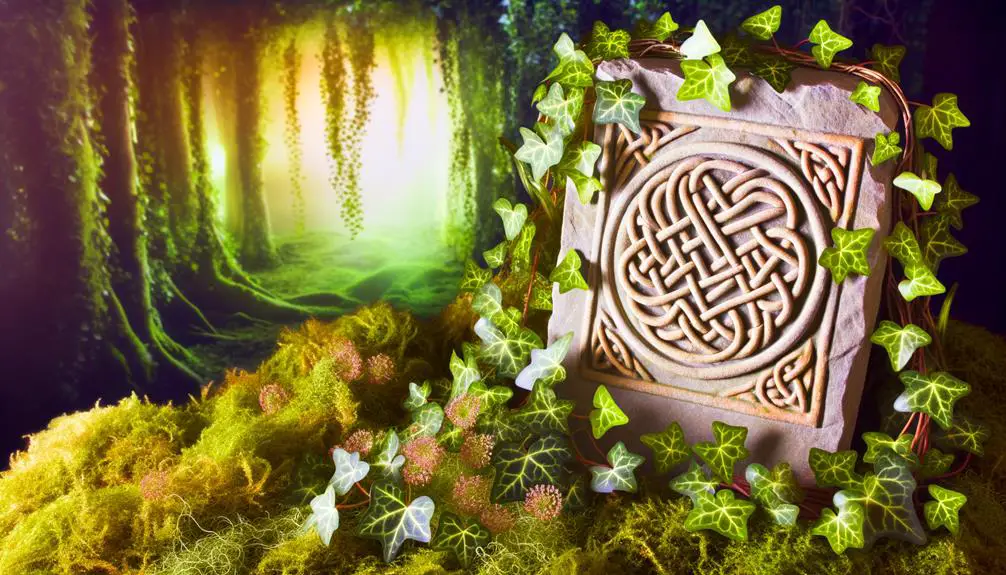
The historical background of the Celtic symbol for love is deeply rooted in the ancient traditions and artistic expressions of the Celtic people. Their intricate knotwork and symbolism have been passed down through generations. Originating in the early medieval period, these symbols were often carved into stone monuments and illuminated manuscripts, reflecting both artistic prowess and cultural values.
The Celts, known for their rich oral traditions, embedded profound meanings within their artwork. Each knot and pattern conveyed complex narratives and emotions. These symbols were not merely decorative; they held spiritual significance and were often used in rituals and as talismans.
The continuity and preservation of these designs underscore the importance of love and interconnectedness in Celtic society, resonating through time.
The Meaning of the Symbol
Interwoven with deep cultural significance, the Celtic symbol for love embodies themes of perpetuity, harmony, and the cyclical nature of existence. This symbol, often depicted as interlocking knots or spirals, conveys the profound interconnectedness between soulmates. Its intricate design is a visual attestation to the unbroken bond that transcends time and space. The symbolism is rooted in ancient Celtic traditions, where such motifs were believed to signify endless love and spiritual harmony.
| Aspect | Description |
|---|---|
| Perpetuity | The continuous loops signify an everlasting connection. |
| Harmony | Interwoven patterns represent the joining of two souls. |
| Cyclic Nature | Spirals reflect the ongoing cycles of life and love. |
This symbol's layered meanings resonate deeply, offering a timeless message of enduring affection.
Symbol Design Elements
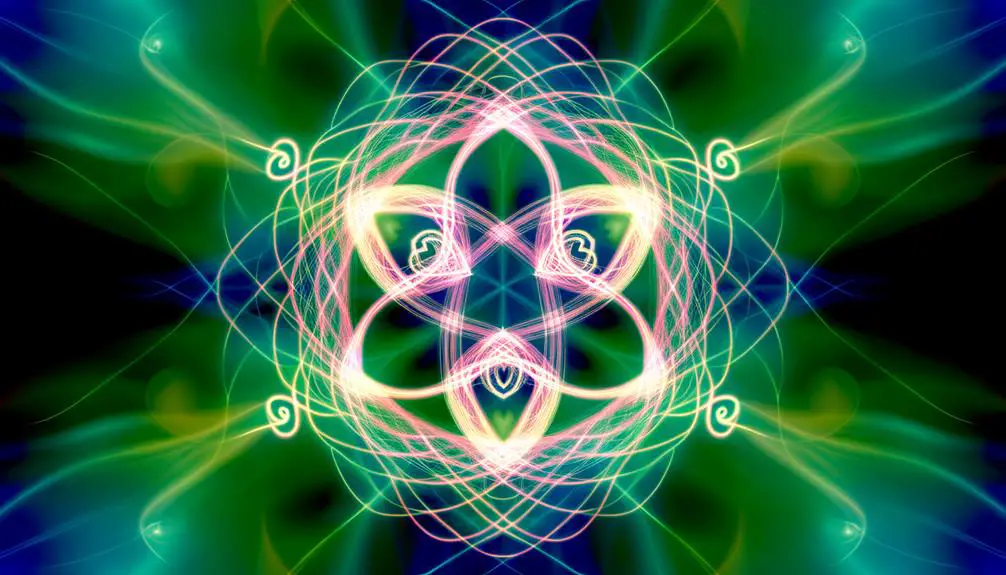
Celtic symbols for love are characterized by intricate knot patterns, whose continuous loops signify eternity and interconnectedness, key elements in expressing enduring affection.
The selection of colors in these symbols also holds profound meaning, with hues such as green and gold symbolizing growth, prosperity, and spiritual enlightenment.
Understanding these design elements is essential for appreciating the cultural and historical significance embedded in Celtic love symbols.
Knot Patterns Significance
Throughout history, knot patterns have held profound significance in symbol design, particularly within the context of Celtic art and tradition. These intricate designs, often referred to as Celtic knots, are emblematic of the interconnectedness and continuity of life, love, and eternity.
Characterized by their endless loops and interwoven lines, these knots reflect the Celts' appreciation for the cyclical nature of existence. Their complexity is not merely aesthetic but imbued with deep spiritual meaning, symbolizing the unbreakable bonds between individuals, especially in the context of love and soulmates.
Each knot, whether simple or elaborate, serves as a visual representation of unity, strength, and the eternal journey shared by those bound by love.
Color and Meaning
While the intricate designs of Celtic knots captivate with their elaborate patterns, the colors used in these symbols also play an essential role in conveying deeper meanings and cultural significance. For instance, green, emblematic of nature and renewal, often signifies growth and enduring love.
Blue, with its association to the sky and sea, represents tranquility and spiritual depth, invoking a serene connection between soulmates. Gold and yellow hues, reflecting the sun's vitality, symbolize prosperity and eternal love.
Red, traditionally linked to passion and strength, underscores the fervor and courage within a loving bond. These colors, carefully chosen, not only enhance the visual appeal but also enrich the symbol's narrative, embedding layers of cultural and emotional resonance within the design.
Symbol Variations
Among the myriad of Celtic symbols representing love, variations such as the Claddagh, the Ailm, and the Serch Bythol each convey unique aspects of this profound emotion.
The Claddagh, with its heart, hands, and crown, symbolizes love, friendship, and loyalty, respectively.
The Ailm, derived from the Ogham alphabet, signifies strength and resilience, attributes essential for enduring love.
The Serch Bythol, composed of two intertwined triskeles, embodies eternal love and unity, reflecting the perpetual bond between soulmates.
Each symbol, deeply rooted in Celtic tradition, encapsulates distinct facets of romantic and spiritual connection, offering a rich tapestry of meanings for those seeking to understand the depth and breadth of love through ancient cultural expressions.
Modern Interpretations
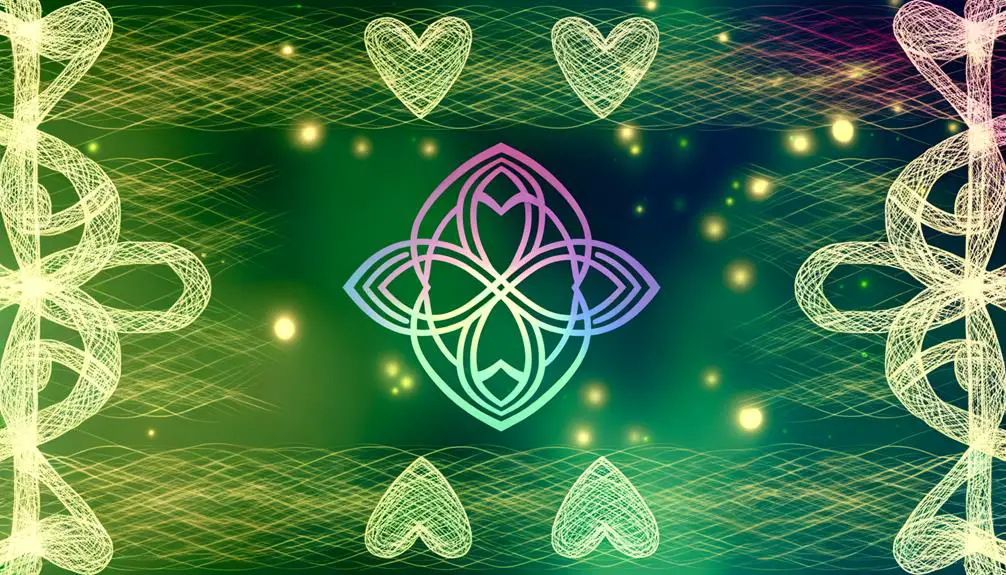
In contemporary times, Celtic symbols for love have been reinterpreted and adapted, blending traditional meanings with modern perspectives to resonate with today's cultural and emotional contexts. This evolution has led to a nuanced understanding of these symbols, integrating ancient wisdom with contemporary sentiments.
Claddagh Rings: Traditionally symbolizing love, loyalty, and friendship, these rings now often represent romantic commitment and eternal bonds.
Triskelion (Triple Spiral): Historically linked to the cycle of life, it is now seen as a metaphor for personal growth and the journey of love.
Celtic Knot: Once a symbol of eternity, it is currently embraced as a representation of interconnectedness and enduring love.
Awen: Originally a symbol of divine inspiration, it is now interpreted as a beacon of harmony and balance in relationships.
These reinterpretations highlight the enduring relevance and adaptability of Celtic symbols in expressing love.
Using the Symbol Today
Today, Celtic symbols for love are utilized in various forms of art, jewelry, and personal expressions, reflecting both a reverence for tradition and a contemporary appreciation for their profound meanings.
These symbols, such as the Claddagh ring or the Celtic knot, are often incorporated into wedding ceremonies, embodying eternal love and unity. Artists and craftsmen meticulously reproduce these ancient designs, ensuring cultural accuracy and aesthetic integrity.
Additionally, digital media has seen an uptick in the use of these symbols, from social media avatars to tattoo designs, as individuals seek to connect with their heritage or express universal themes of love and devotion.
Consequently, the timeless essence of Celtic love symbols remains vibrantly alive in today's diverse cultural landscape.
Conclusion
The Celtic symbol for love, rich in historical significance and intricate design, transcends mere ornamentation to serve as a timeless emblem of deep emotional bonds.
Its various interpretations and modern applications underscore its enduring relevance in contemporary society.
This symbol, steeped in cultural heritage, offers a sophisticated means of expressing profound affection and connection.
Consequently, its continued use today not only preserves ancient traditions but also enhances the articulation of intimate relationships in a nuanced manner.


